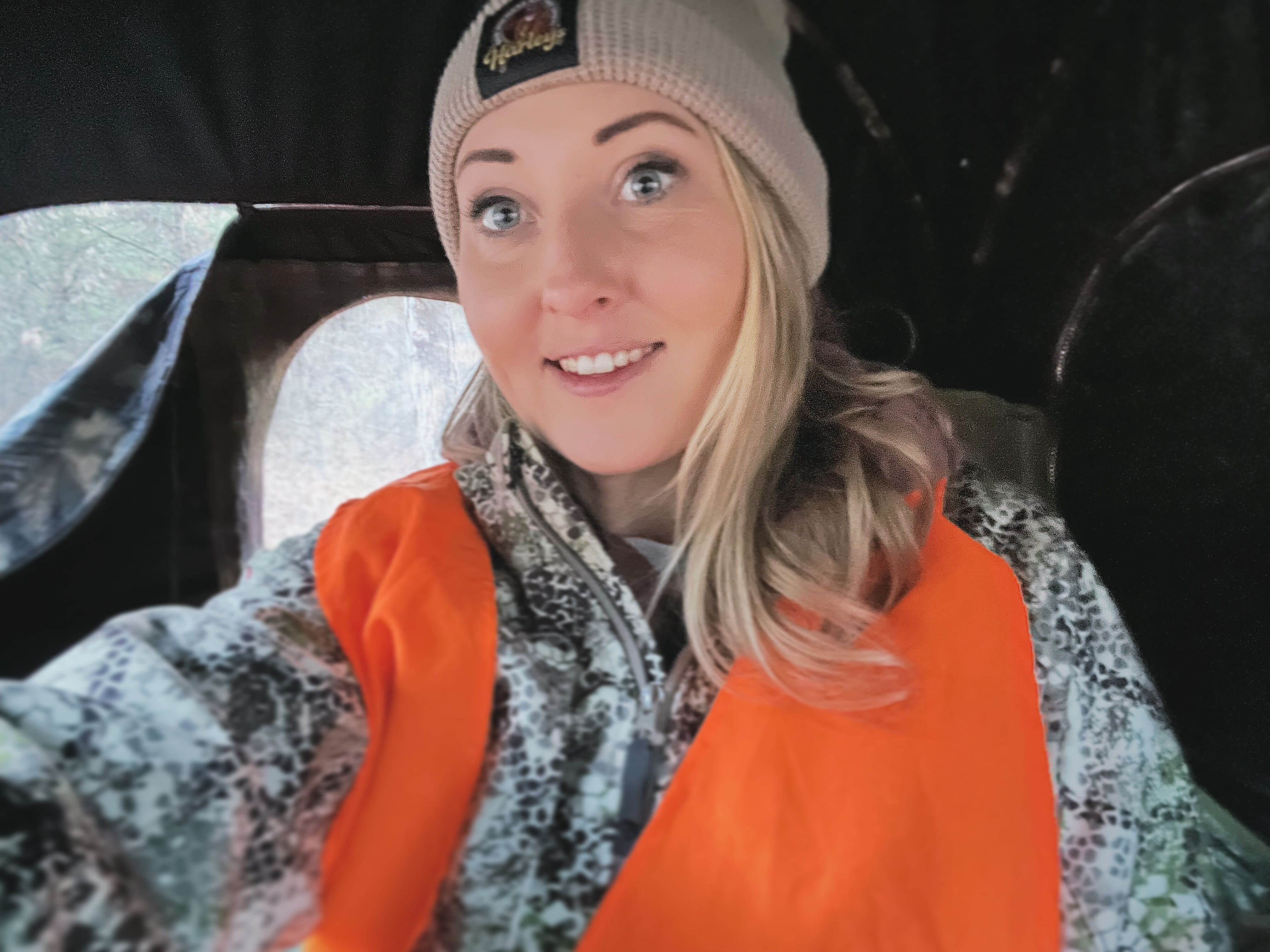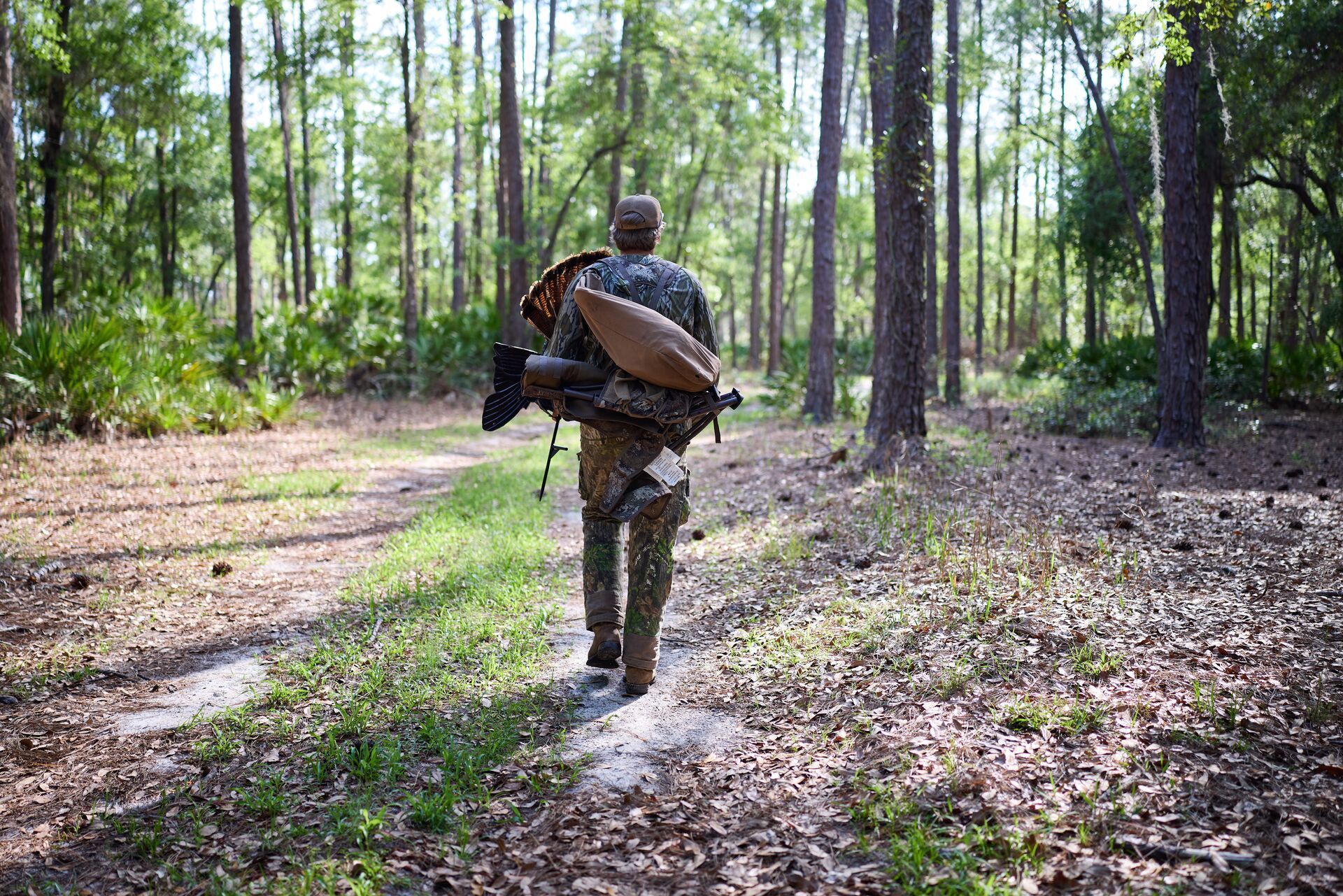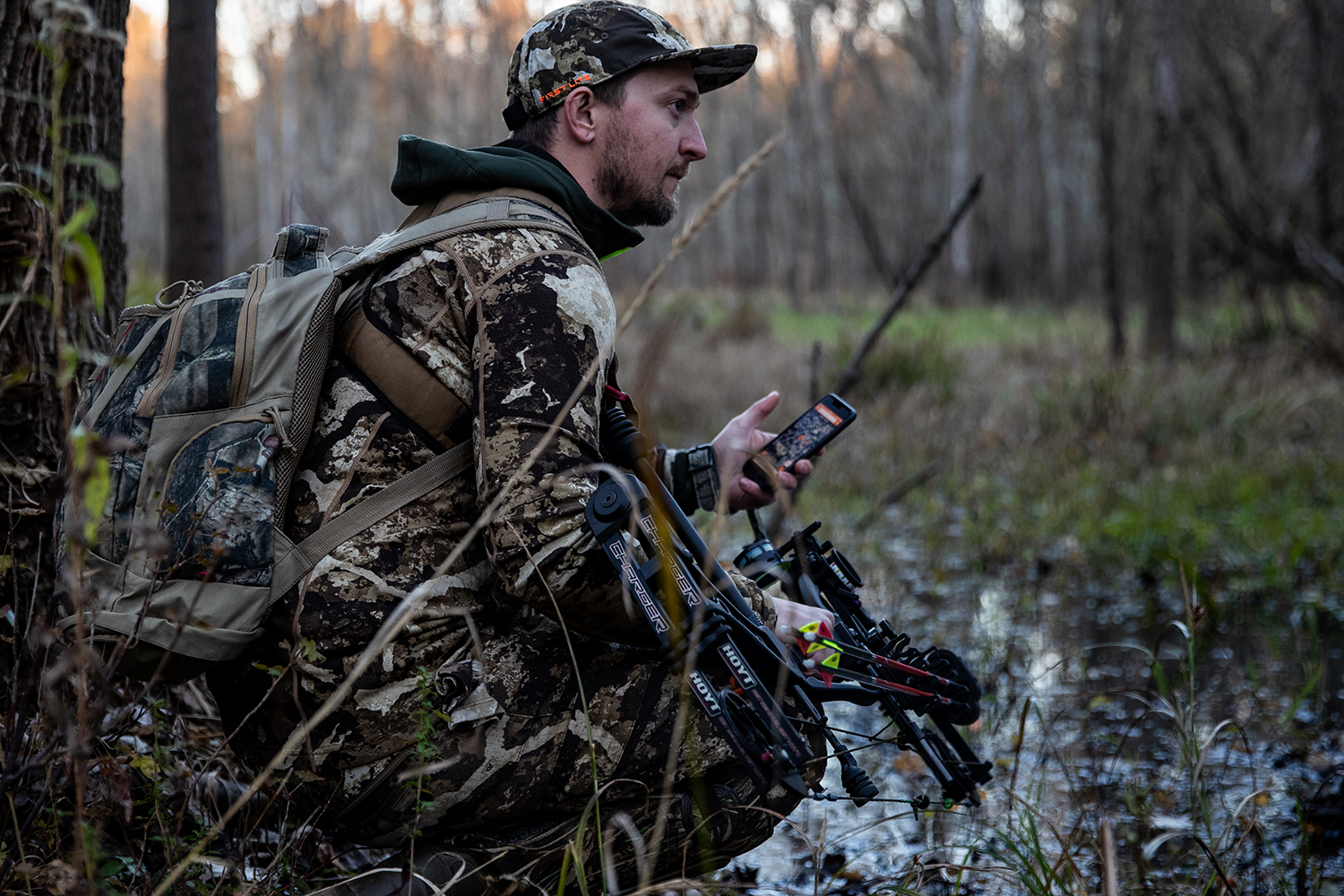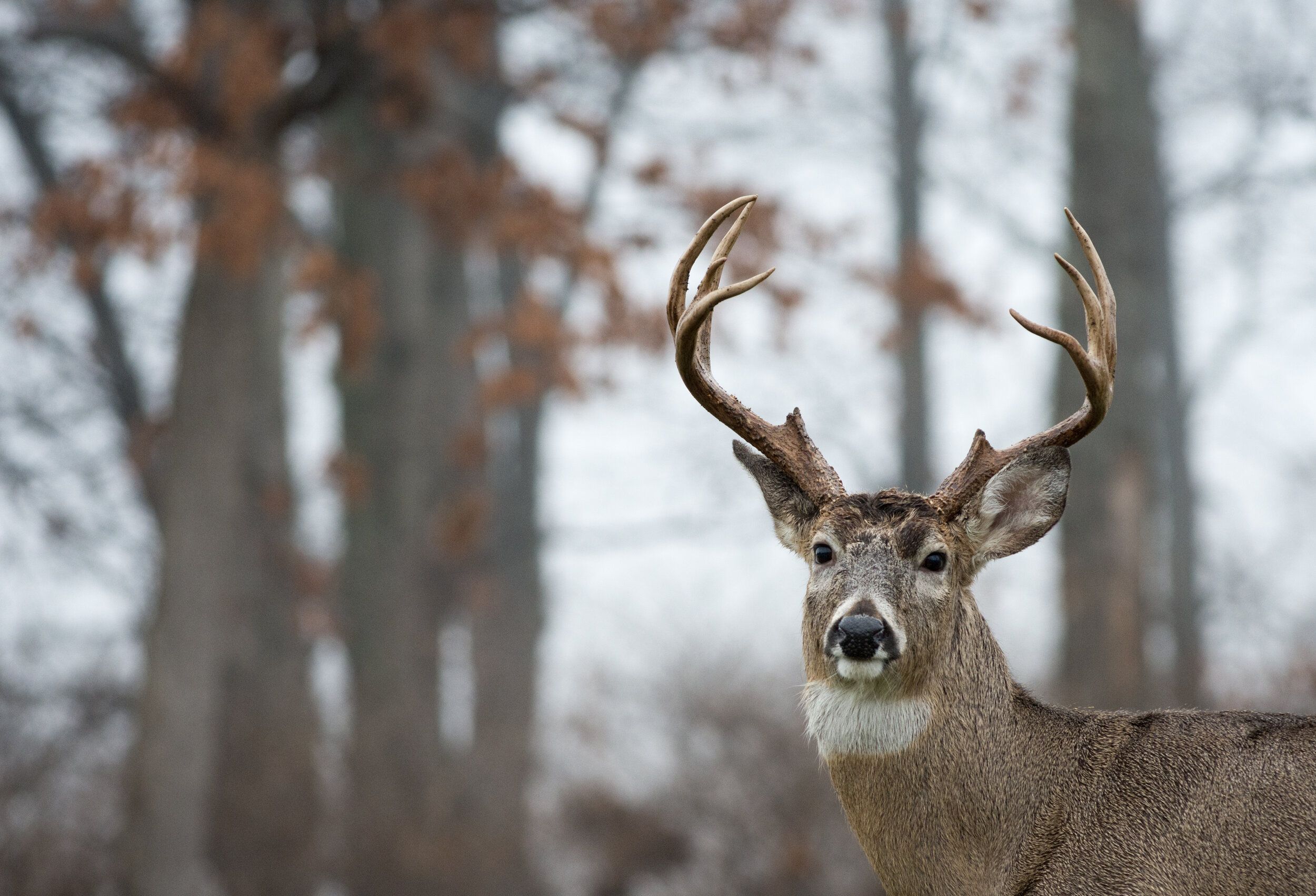Field Guide / Hunting Tips
How To Find New Public and Private Hunting Land

16 Minute Read
An ongoing question for every hunter is: “Where do I hunt?” Whether you’re an elk hunter, deer hunter, or turkey hunter, finding the best public or private hunting land is crucial for a successful hunt.
Where to hunt is one of the first things to determine when planning your next trip. Plenty of hunting plots are available with millions of acres of public land in the United States. However, not everyone lives close enough to hunt out west regularly, has a family cabin up north to hunt those areas, or even lives out in the country with fields of agriculture that could be good options for the next hunt.
An alternative solution to public land is to hunt private land. Many hunters don't have the ability or luxury to own acres and acres of hunting land, but that doesn't mean it's impossible to find and hunt on privately owned land affordably.
If you put the hard work into research and time spent in front of a map, you'll find places to hunt. The best way to find public or private land is to scout, research, and ask for permission.
It can be a challenge to find a place to hunt, especially at the last minute. Many hunters also deal with fear and feel overwhelmed when asking landowners for permission to hunt on their land. Yet, every year, many hunters go out into an unknown area and fill their tags.
Time to put the work in! Here are our best tips for finding the best public or private land for your next hunt. Remember that you will have competition with other hunters, but don't let that deter you, as that's part of trying to find new hunting grounds.
What Is Public Land?
In the United States, hunters have unparalleled opportunities for hunting public land within the millions of acres set apart for hunting and conservation.
These acres include:
- 61 hunting areas managed by the National Park Service
- 401 national wildlife refuges and 35 wetland management districts managed by the U.S. Fish and Wildlife Service allow hunting
- Approximately 197 million acres of BLM public lands that allow hunting in accordance with federal and state regulations and laws.
If you're not able to find a spot to hunt on any of these acres that fits your timeline or next trip, scouting private land could be the solution!
Chapter 1: Scouting to Find Public and Private Land
To become a better or highly skilled hunter, scouting year-round is the way. While following our tips can help you develop a good method for scouting land, most hunters eventually develop their preferred way of doing things – and there are plenty of methods and rabbit holes to fall into to find the strategy that brings you the most success.
We recommend starting by scouting your local area and any other locations you have your mind on hunting. Pay attention to where animals hang out. Learn their habits, behavior, and feeding ground.
Pattern the animals you want to hunt. Think of a triangle when patterning an animal: food, water, cover.
Use a Digital Mapping App
"Scouting" land doesn't mean you have to start by going to the land you plan to hunt. However, knowing where land boundaries fall for public and private property is crucial.
The better you prepare for a hunt, the more you will increase your chances of being successful. Most experienced hunters start scouting by "e-scouting." GPS technology and apps like HuntWise have changed how hunters prepare for hunts in unknown areas. When you are about to embark on a backcountry big game hunt, a whitetail hunt on new lands, or even a turkey hunt in the neighbor's field, e-scouting or digital scouting enables you to view the land you are about to hunt by using GPS and mapping layers.
Use the mapping layers in the HuntWise app to see government lands, county boundaries, and landowner boundaries with owner contact information. When preparing for your hunt, look for areas that border private lands or restricted units that may have less pressure. Some of the lands might be "landlocked," but you can find the right of way and easements for alternative access to certain public lands.
Don't discount boundary lines when planning your hunt. Sometimes, the best hunting is on the boundary lines. Find those hidden gems.
Locate Bedding Areas and Food Sources
Bedding areas and food sources are two of the most crucial elements in unlocking an animal's world. Bedding areas are the key role players during rut activity, and food sources will often help you locate animals during the late season or post-rut.
In other words, bedding areas and food sources affect animal behavior year-round because it drives their motives to be active. More often than not, deer and elk will typically bed near a food source, so if you take note of these areas during the off-season, your odds of success for your hunt will go up.
Learn what they eat, and find areas on the map that look ideal for trees, bushes, and plants that provide the food source. Then, after e-scouting and identifying your best options for your hunt, put some boots on the ground, set up some trail cameras, and assess the area.
Repeat this process for multiple areas. Through the process of elimination, you'll end up with an excellent idea of where you'll want to hunt this fall.
Find Thick-Covered Areas
When scouting and deciding where to set up or move your stands during the off-season, finding areas with thick coverage is essential. Locating proper coverage is vital because it provides the deer and elk with hiding spots for bedding, fawning, and other activities that they will carry out only if they feel safe.
Heavy areas of pine trees, dark timber, and swamps are a great start to finding big game. While HuntWise can help you find these areas through e-scouting, be sure also to scout them by foot to identify the best spot for your stand.
Animal Signs
A highly effective tactic to apply during scouting is to look for animal signs.
Big game animals give themselves away throughout the year. When hiking, scouting, and looking for sheds, you can find various animal signs, such as scat, antler rubs on trees, scrapes, empty acorn hulls, and other signs. Try to identify how fresh it is and determine if what you see is from winter or fall, spring or summer.
Then, use waypoints in the HuntWise App to mark the animal evidence you see and then compare that info to what you have seen while scouting throughout the year. This will give you a good idea of where the animals are traveling, eating, and bedding so you can hunt where the animals are.
Chapter 2: Gaining Access to Private Land
If you've identified private land options for your hunt, it's crucial to ask permission from landowners before scouting or hunting the land.
Scout The Area
Like scouting areas to learn about the animals you're hunting and the neighboring lands around you, you'll want to drive to the properties you have your eyes on a few months before the season starts to scout them in person.
The best way to explore the private land you've marked for further scouting is to download offline maps in the HuntWise app. Evening drives can tell you a lot about an area, especially in late June or early August. If you hunt mountain turkeys or elk, you'll have to plan a weekend to get some hiking time in.
Once you have determined animal patterns and where they hang out, you can prepare yourself to ask some landowner's permission to hunt their property.
Ask Permission and Be Polite
Never assume a landowner will allow you to hunt on their land or think it's not crucial to be polite when asking permission for access.
Be prepared for rejection because it will happen – and it might happen a lot. That's okay; don't let that deter you. Eventually, you'll get a yes.
Mentally prepare yourself for how you want to sound when talking with a landowner and know your goal. Put yourself in their shoes and understand that the landowner might deal with frequent requests to hunt their land, and you are likely not the first to ask.
The ideal time to knock on doors is in the off-season, in casual clothing, at an appropriate time of day when you won't interfere with their day. Keep in mind that you are a complete stranger showing up at someone's home uninvited. The odds are not in your favor.
You can gain some points in your favor by being well dressed and polite and maybe even bringing a gift. (Hint: homemade baked goods usually do the trick). Explain to the landowner that you've seen some animals on their property and would be interested in helping them with the animal population.
You can even cater to the other people or family members who may be hunting there and explain you don't plan to take trophy animals.
Again, remember you are asking them for a favor, and they don't owe you anything. So if you get a "no," you can always follow up by asking if they know anyone who allows hunting or is looking for wildlife management on their property.
Be Respectful
Keep your word. If you say you will do something (like honor the rules or hunt during a specific timeframe), stick to that.
Remember, you are a guest on their property. Leave it better than you found it. This means no tire ruts, no littering, and no shell or bullet casings left behind.
Also, be mindful of other hunters or family members on the property during your hunt. Find out what the landowner's pet peeves are and the rules of the land, and be sure to follow them.
The more you can build a positive relationship and possibly even a friendship with them, it could lead to a long-term hunting agreement. Simple gestures and acts of appreciation can also go a long way. Offer to help clear some brush and trees, long branches, or help with land projects. Consider sending a card during the holidays.
Be Part Of The Community
Trying to gain permission on private hunting lands doesn't always have to happen by knocking on doors. A great way to find new public land areas or even get invited to hunt on private land is to participate in the local community.
Join a trap league at the local rod and gun club or an archery league at your archery shop; you can even muster up the courage to chat with someone new at the local grill. Do someone a favor if you know someone who needs help with dropping a tree, planting a food plot, or any act of service.
You never know when an opportunity can present itself simply by meeting someone new in the right situation. Increase your chances of hunting on prime private land by putting yourself out there and connecting with others in your community.
Chapter 3: Public vs. Private Land
Should you prioritize hunting on public land vs. private land? Both types of land have their benefits and pitfalls.
Depending on your preferences, you might choose to hunt only on private land vs. public land or split your time between the two.
What to Know About Hunting Public Land
If you choose to listen to the critics and never even attempt to access public lands or don't give your best effort, how do you expect yourself to grow as a hunter? Never give up on an idea without trying it first.
However, public land hunting is not even an option for most people in areas such as the Midwest. It's over-saturated and busy, the deer are heavily pressured, and it can be dangerous. It can also be the worst experience you've ever had or the most amazing experience, depending on what you make of it.
Often, a large piece of public land hunts better than a smaller private piece. The deer might be bedding on private property, but they travel, eat, and rut on public lands. You just need to know where to be.
This is where boots-on-the-ground scouting comes in handy. The bigger the piece of land, the less impacted by the pressure you are. In some cases, pressure is beneficial. If you can pinpoint where the pressure will be, you can be on the opposite side, right where the deer will flee.
Sometimes, that means going where no one else is willing to go. The work never ends on public land. You must continually scout and try new areas and tactics for successful hunts. However, hunting public land can be more rewarding and help you become a better hunter.
Keep an Eye On Your Stuff
Remember that public land is open to anyone to hunt legally. That means it's crucial to be mindful of your gear.
Be careful about leaving stands, trail cameras, or blinds behind on public land. In some areas, hunters aren't permitted to leave anything behind, but you may not find what you left where you left it on public land. Theft is also a high issue on public land.
What to Know About Hunting Private Land
Hunting private land can be a lot of work. Asking for permission, scouting the land, setting tree stands, planting food plots, and designing the best whitetail or elk property require constant upkeep.
It can also become "repetitive" hunting, going up and down the same tree or in and out of the same blind with limited options on a smaller piece of land. Or maybe the landowner just logged your favorite pine stand, and you lost a spot that always delivered success for your hunts.
However, when you find a landowner who allows you to hunt more than once and you build a relationship with them, enjoy it while you have it. Landownership can change, or the current owner could decide they no longer allow hunting on the property.
Once you have the land and the game animals figured out, the hunting season becomes much easier and more relaxing. Private land hunting means you have fewer hunters to encounter and a good idea of the animals in the area. You also know where you're going, where your stands are, and what to expect each season.
Chapter 4: Finding Hidden Gems
Most hunters have e-scouting from the couch pretty mastered. You have your public land spots picked out and even some private land areas you've got some access to.
How many times have you been ghosted by an elk or a big buck? Where do they go, and how did they get the best of you? The answer could be "honey holes" or hidden gems.
Aside from using online mapping tools like HuntWise or studying aerial maps, assessing habitats, and locating tough-to-access spots, you might need to take your scouting efforts a step further to learn about animal movements, where you lose them, and if hunting is permitted on these "hidden gems."
Using the private property layer in HuntWise or any other tool that has GIS (geographic information system) data, you can seek out land where hunting is prohibited or strongly regulated. City parks, church camps, boys ranch facilities, and private wildlife areas are all worth checking out.
Even if you can't hunt there, finding these spots can help you solve mysteries about where animals go – and where they might come back out on huntable land.
Chapter 5: Use the Best Hunting Maps and App
If you're serious about hunting and want to maximize your time chasing big game, HuntWise has you covered.
From planning out your deer or elk hunts to e-scouting, HuntWise can help you stay one step ahead with live weather reports, weather forecasts, sunrise and sunset times, and species-specific big game predictions.
In the woods, strategy is key. Putting in the work can make all the difference when filling a tag. Luckily, there are tools to make things a lot easier.
Here is a look at the top tools in HuntWise to help you prepare for and improve your hunting season.
See Land Boundaries
Knowing where land boundaries fall for public and private property is crucial.
So, how do you find land? The easiest way to view public land is by using HuntWise maps. You can look at landowner boundaries, including state, federal, and all other public lands.
You'll also see landowner names and contact info.
Use the 3D Mapping Feature
Viewing the map in 3D mode from your iPhone will give you a more topographically detailed map of the land. Knowing where good elevated lookout spots are for these areas will give you the upper hand on your stalk or planning while e-scouting.
Share With Your Friends
Are you planning a group hunt? This feature allows you to share your hunt area with friends so they can see all of your pins and waypoints.
Markers are especially useful when hunting with your buddies since you can share your marked spots. In HuntWise, you can also add photos and notes to markers for increased detail.
Access Offline Maps
"Offline your maps," or save them, with all the layers and features, to your phone so you can use them wherever your hunt takes you. Even with no cell phone service, you can mark glassing points or where an animal went down.
Chapter 6: Hunting Ethics
No matter where you hunt, it's important to abide by good hunting ethics.
Obey the Rules
Whether on public or private land, obey land signs.
These signs can include:
- No Hunting
- No Trespassing
- Private Property
Even if you've tracked an animal all day and you nearly have it, if it crosses beyond a sign that says "No Hunting," don't follow the animal onto that land.
Additionally, when choosing your hunting spot, especially on public land, be mindful of other hunters. Look for stands or blinds left by other hunters, and try to steer clear.
A good rule of thumb is to leave 200-300 yards between you and other hunters' stand areas. If you encounter another hunter, have a friendly conversation, determine your directions, and go opposite ways.
Know Your Surroundings
It's easy to focus only on an animal you plan to shoot. However, it's crucial to always be on the lookout for other nearby hunters and outdoor enthusiasts.
Always know your target and what's beyond it to establish your safe zone of fire. Never shoot in the direction of homes, hiking trails, or anywhere people could be.
Make sure your gear and weapon are in working order and properly inspected to prevent accidents and injury.
Respect the Animal
In the age of technology and social media, it's important to learn the latest rules associated with these new technologies.
Hunters are in the spotlight now more than ever. With the battle for gun rights and some states trying to ban certain aspects of hunting, we need to set an example and be a good role model for non-hunters and new hunters.
For example, when taking photos or posting videos on social media, be respectful and tasteful with the animal. Our public lands are one of the most extraordinary things about our country and vital for wildlife conservation. We must do our best to protect these rights.
Use HuntWise to Find Public or Private Hunting Land
Planning your hunt starts with understanding the land and how the animals move through it. With HuntWise, you can start planning earlier with map layers and markers, then choose the public or private land to scout by truck or foot.
Whether you prefer public or private land, HuntWise makes it easy to e-scout the best spots. Build relationships with private landowners during the offseason using the contact information in the app so you're ready to get into the woods or the field when the season starts.
It's free to download and use HuntWise! Get it today and get ready for your next hunt.
Content updated February 21, 2024.
Previous in Hunting Tips
Next in Hunting Tips
Try HuntWise For Free
Start your risk-free 7-day trial now!
More Content Like This
10 Photography Tips for Hunting Influencers
Creating visually engaging images has always been the end goal of a photographer. With the rise of social media platforms, engaging user-created content is more important than ever. Read More
Read MoreHarvesting Big Bucks Post Rut: 3 Strategies for Success
Why does it sometimes seem like the biggest bucks only come out after the rut? Because it's true!Read More
Read More
The Year-Round Hunter in May: How to Hunt Turkey in the Spring
May is still the thick of spring turkey season for many hunters (but that's not all you should be doing this month). Still, you may be asking how to hunt turkey in the spring — and specifically in May — as the season draws to a close. Read More
Read More Hunting Tips
Hunting Tips10 Photography Tips for Hunting Influencers
By Teri Williams | 06/05/2023Creating visually engaging images has always been the end goal of a photographer. With the rise of social media platforms, engaging user-created content is more important than ever. Read More
Read More Hunting Tips
Hunting TipsHarvesting Big Bucks Post Rut: 3 Strategies for Success
By Lexi Quinn | 11/28/2023Why does it sometimes seem like the biggest bucks only come out after the rut? Because it's true!Read More
Read More Hunting Tips
Hunting TipsThe Year-Round Hunter in May: How to Hunt Turkey in the Spring
By Travis Hawkins | 04/29/2025May is still the thick of spring turkey season for many hunters (but that's not all you should be doing this month). Still, you may be asking how to hunt turkey in the spring — and specifically in May — as the season draws to a close. Read More
Read More
1 of 3